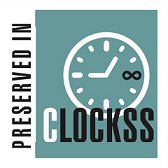Factors Associated with Juvenile Delinquency: A Case of Arusha Juvenile Remand Home in Arusha City-Tanzania
Abstract
The assessment of factors related to juvenile delinquency was conducted at Arusha Remand Home in Arusha City. This study adopted a cross-sectional design and gathered both quantitative and qualitative data from various primary and secondary sources. A sample of 103 respondents was selected using a simple random sampling technique. Structured interviews using researcher-administered questionnaires were employed to collect primary data from the participants. In-depth interviews were conducted with selected juveniles to obtain insights into the delinquency in the city. Descriptive statistics and the Likelihood Ratio Chi-Square test were employed for quantitative data analysis, utilising IBM SPSS Statistics version 20. The findings indicated that theft offences accounted for a significant proportion of juvenile delinquency (45.6%), followed by abuse (29.1%) and vandalism (25.2%). The primary causes of delinquent behaviours were identified as poverty (67%), peer influence (28.2%), and family dysfunction (4.9%). Additionally, the study identified gender, household size, parenting style, and the causes of committing crimes as factors associated with juvenile delinquency. Based on these findings, it is recommended that the Arusha City Council, in collaboration with other stakeholders, develop targeted interventions and initiatives to address the specific challenges faced by juveniles. Government welfare officers in Arusha City should design educational programmes aimed at equipping families with the necessary knowledge and skills to create a nurturing environment for their children, thereby guiding juveniles onto a positive path. Implementing these recommendations aims to prevent and reduce juvenile delinquency and promote the overall well-being and positive development of young individuals in Arusha City
Downloads
References
Ahmad, S. A. A. (2020), Delinquency as Predicted by Dark Triad Factors and Demographic Variables: International Journal of Adolescence and Youth 2020, VOL. 25, NO. 1, 661–675; https://doi.org/10.1080/02673843.2020.1711784
Berkowitz, A. D. (2019). Positive deviant behaviour and nutrition education food. University of California Press, Berkeley, 156pp.
Bernburg J. G. (2019). Anomy Theory, Criminal Behaviour, Criminological Theory, White Collar Crime: DOI:10.1093/acrefore/9780190264079.013.244
Boakye, K. E. (2020). Reprint of: Juvenile sexual offending in Ghana: Prevalence, risks and correlates. Child Abuse & Neglect, 105, 104570-12. https://login.research4life.org/tacsgr1doi_org/10.1016/j.chiabu.2020.104570
Bosk, E. A., Anthony, W. L., Folk, J. B., & Williams-Butler, A. (2021). All in the family: parental substance misuse, harsh parenting, and youth substance misuse among juvenile justice-involved youth. Addictive behaviours, 119, 106888.
Carney, T., Myers, B. J., Louw, J., Lombard, C., & Flisher, A. J. (2013). The relationship between substance use and delinquency among high-school students in Cape Town, South Africa. Journal of Adolescence (London, England.), 36(3), 447-455. https://login.research4life.org/tacsgr1doi_org/10.1016/j.adolescence.2013.01.004
Christopher, G.A. (2018). Crime and Resistance toward a Theory of Cognitive Sociology. The American Journal of Gender 107(1):990-1066.
Cochran W.G (1977). Sampling Techniques, Third Edition, John Wiley and Sons, New York
Dako-Gyeke, M., Adam, A., and Mills, A.A. (2020). The Quagmire of Juvenile Delinquency: Perspectives of Inmates and Officers in a Correctional Facility in Accra, Ghana. https://doi.org/10.1080/01639625.2020.1808770
Fufa, B., Jibat, N., and Fikadu H. (2021). Practices and Challenges of Treatment of Juvenile Delinquents in the Correctional Centre of Jimma Zone, Oromia State, Ethiopia. Ethio.j.soc.long.stud.Vol. 8 .No.2, pp 7-2. http://journals.ju.edu.et/index.php/ejssls
Hampton, P.T. (2020). Causes of Delinquency. University of California Press, Berkeley, 300pp.
Haule, M. (2020). Role of Government in The Administration of Criminal Justice on Juveniles in Tanzania: A Case Study of Songea Municipality (Doctoral dissertation, Mzumbe University).
Hazra, D. (2021). Determinants of juvenile crime: Evidence from India. California State University - Los Angeles, Los Angeles, California, USA: DOI 10.1108/IJSE-08-2020-0528
Kadilu, M. (2018). Protecting the Rights of Detained Juvenile Delinquents: Tanzania’s Compliance with International Standards (Doctoral dissertation, Mzumbe University).
Kiche, J. O. (2020). Examining the Influence of Economic Dynamics on Juvenile Criminality in Nakuru Sub-County, Kenya. International Journal of Research in Education and Social Sciences (IJRESS) 3 (2), 1-9.
Marsay, G., Scioli, A., & Omar, S. (2018). A Hope-Infused Future Orientation Intervention: A Pilot Study with Juvenile Offenders in South Africa, British Journal of Guidance & Counselling, 46:6, 709-721, DOI: 10.1080/03069885.2018.1480011
Muhammad, S.T. (2018). Rural Crime and Rural Policing: Multi-cultural Law Enforcement. Detroit School of police staff journal 1(1):4-26.
Mwihomeke, T., & Jally, R. (2022). Sentencing Child Offender: Key Principles and Substances that the Juvenile Court Needs to Consider in Tanzania. East African Journal of Law and Ethics, 5(1), 1-12. https://doi.org/10.37284/eajle.5.1.576
Neissl, K.S. (2020). Juvenile Delinquency and Urban Area (2nd ed.). University of Chicago Press, Chicago, 112pp.
Okafor Samuel O (2017) Nigerian Social Institutions in the Lens of Anomie Theory. Social Crimonol 5: 167. doi: 10.4172/2375-4435.1000167
Okpa, J. T., Eshiotse1, E., Ofem, O. N., Sylvester, A., and Andrew S. U. (2021). Child Labour and Delinquent Behaviour in Nigeria: A Risk Factor Analysis: DOI: https://doi.org/10.36941/ajis-2021-0067
Rodgers, A.Y. (2019). Unravelling juvenile delinquency. Harvard University Press, Cambridge, MA, 128pp.
Tesfamichael, T., Zeleke, T., Kidane, Y. (2020). Social Causes of Juvenile Delinquency: The Case of Axum Correctional and Rehabilitation Center, Northern Ethiopia. DOI: 10.29322/IJSRP http://dx.doi.org/10.29322/IJSRP.10.07.2020.p10356
United Republic of Tanzania (URT). (2017). Crimes rates and safety Index in Arusha. Arusha Government printers, Arusha, 49pp.
Warui, Z. W., Kaaria Z., Kivanguli G. (2021). Family Related Factors Contributing to Juvenile Delinquency in Starehe Sub-County: IOSR Journal of Humanities and Social Science (IOSR-JHSS), 26(8), 27-39.
Copyright (c) 2023 Caroline Wilbard Mlay, Innocent Fabiano Mpeta

This work is licensed under a Creative Commons Attribution 4.0 International License.




























